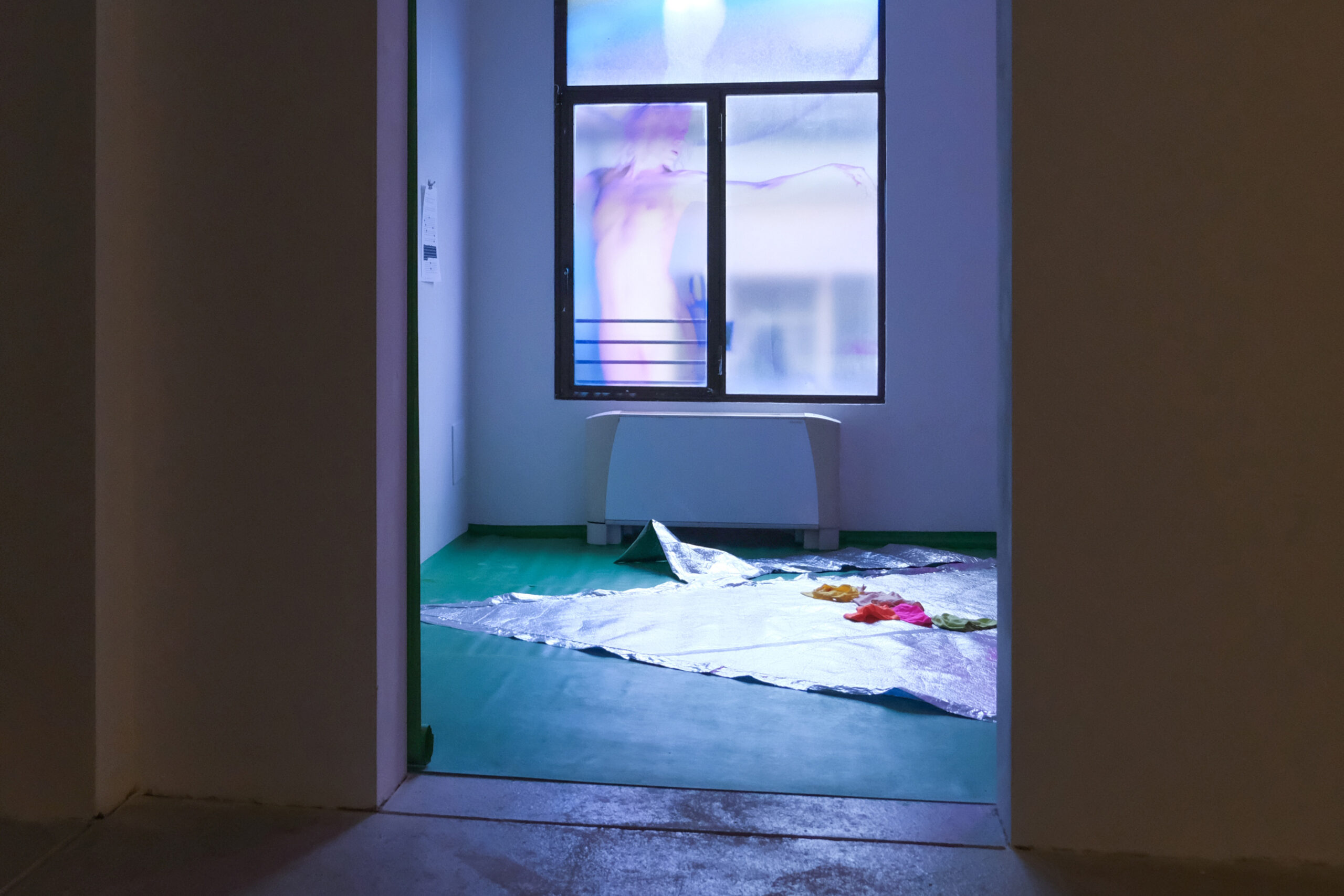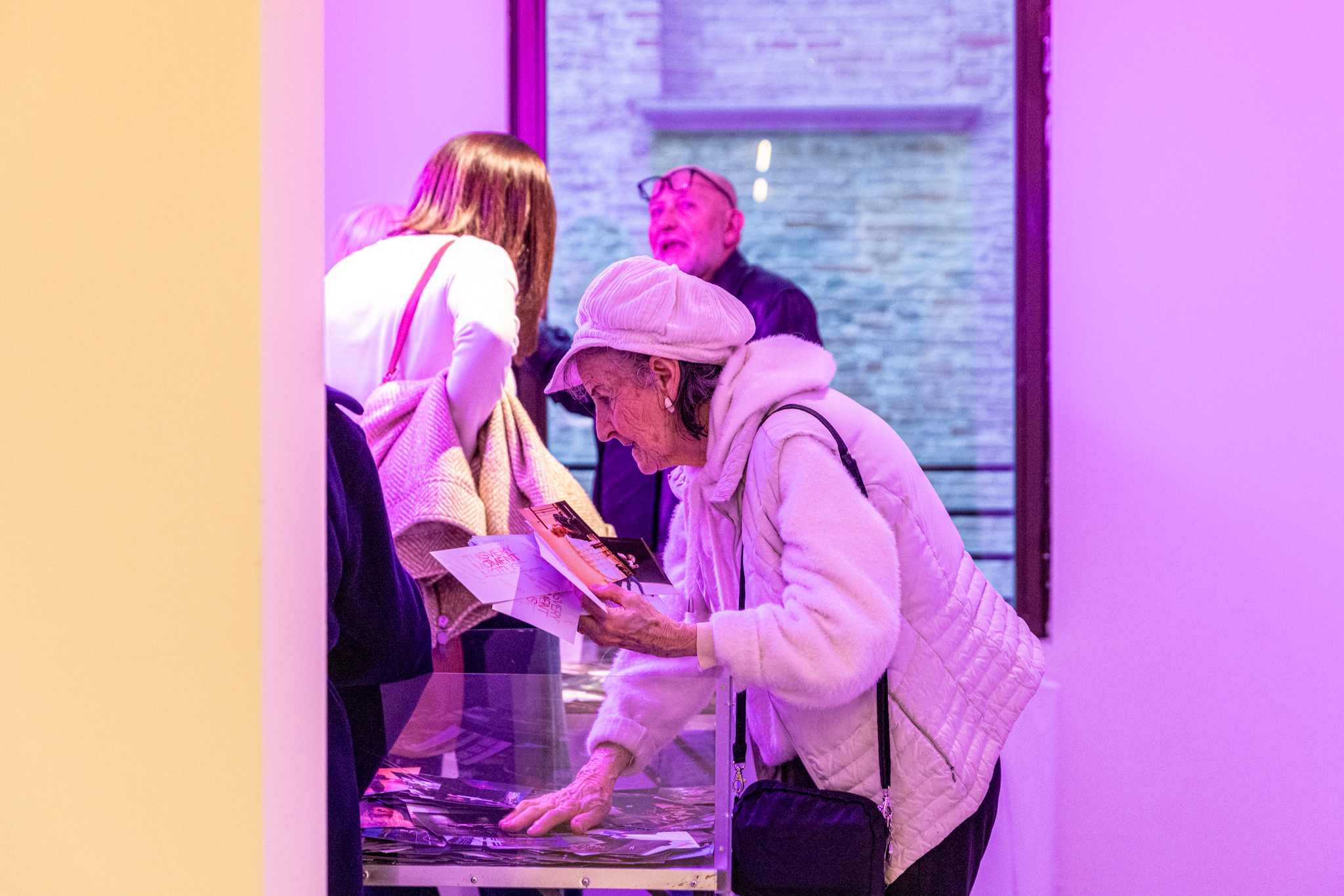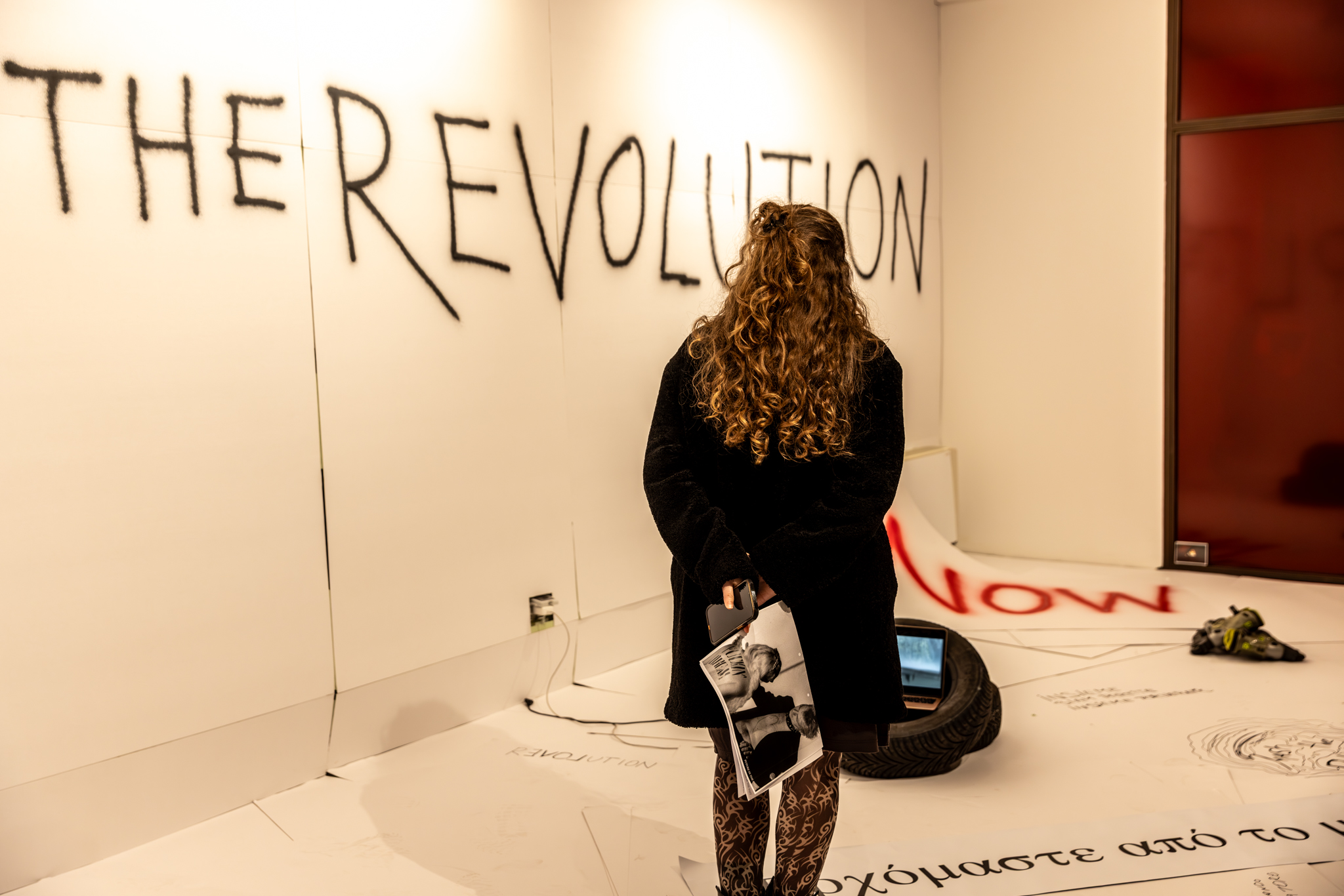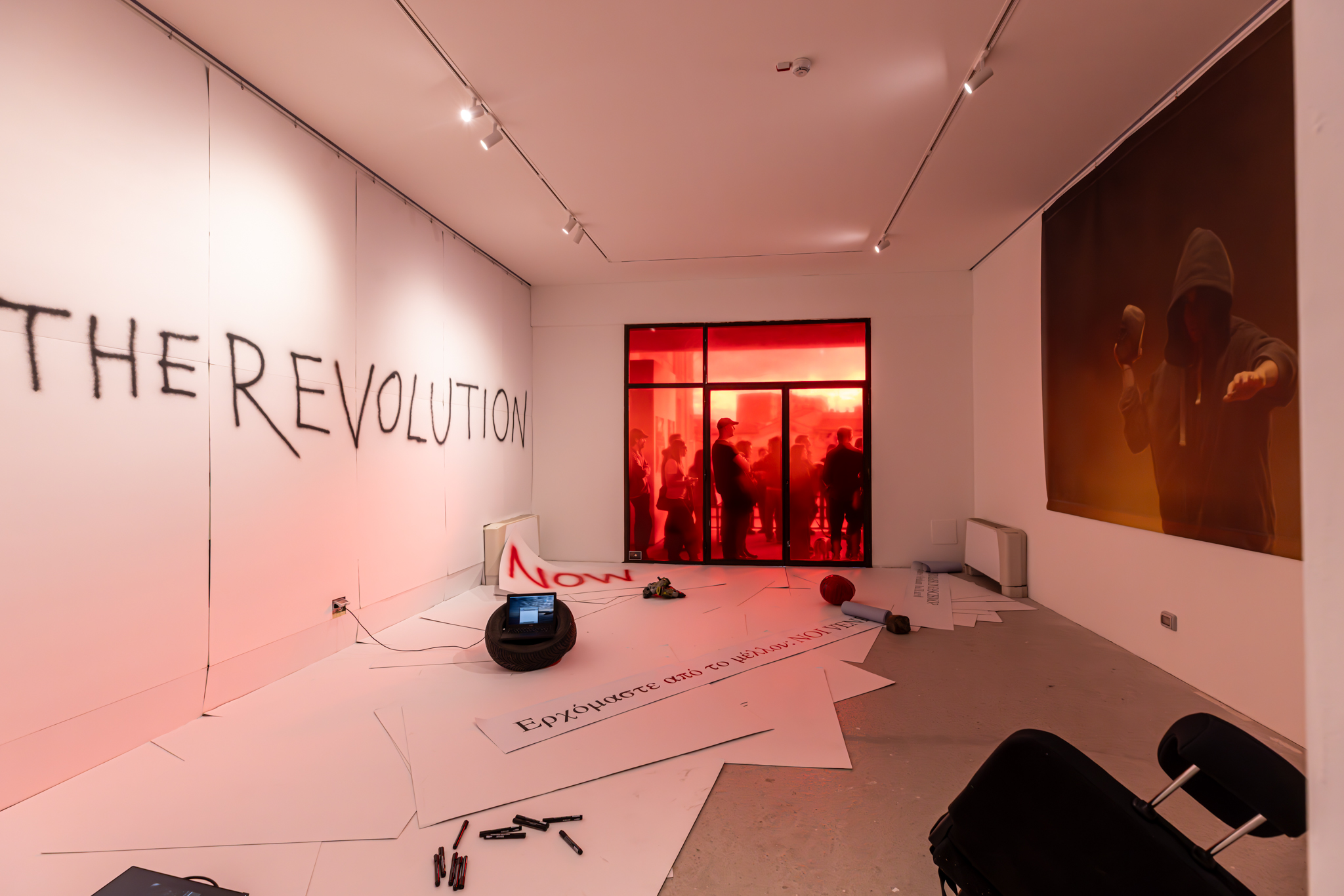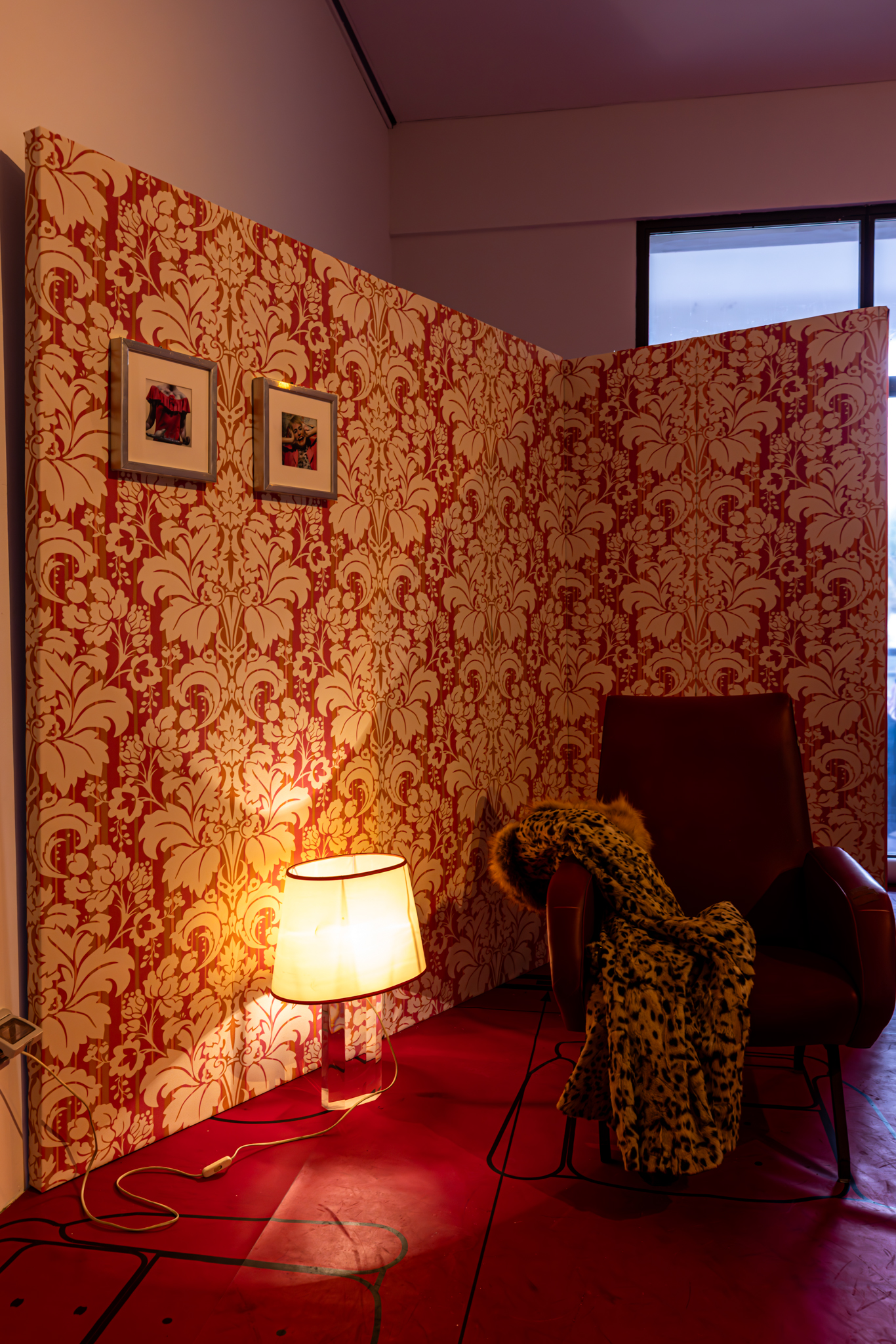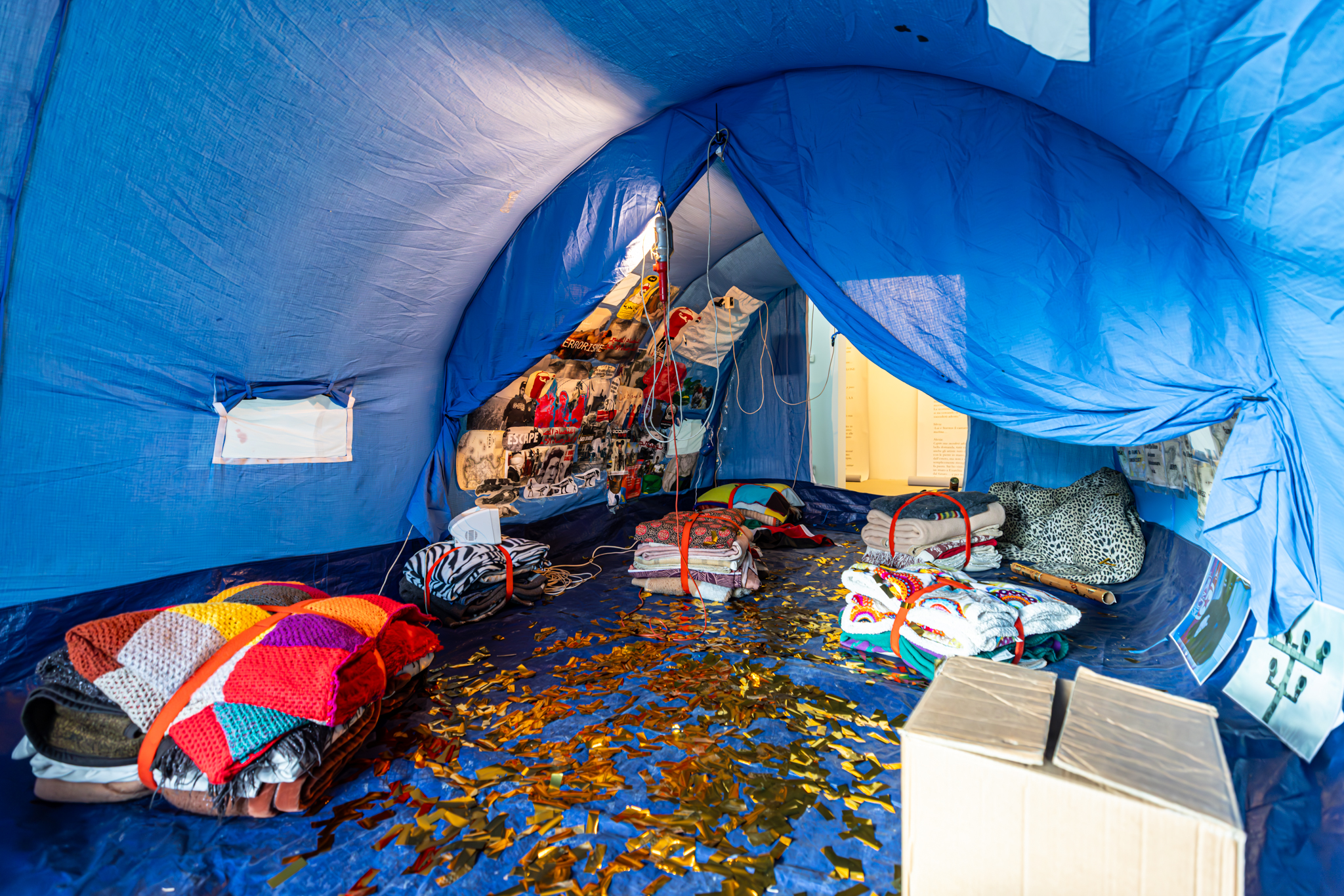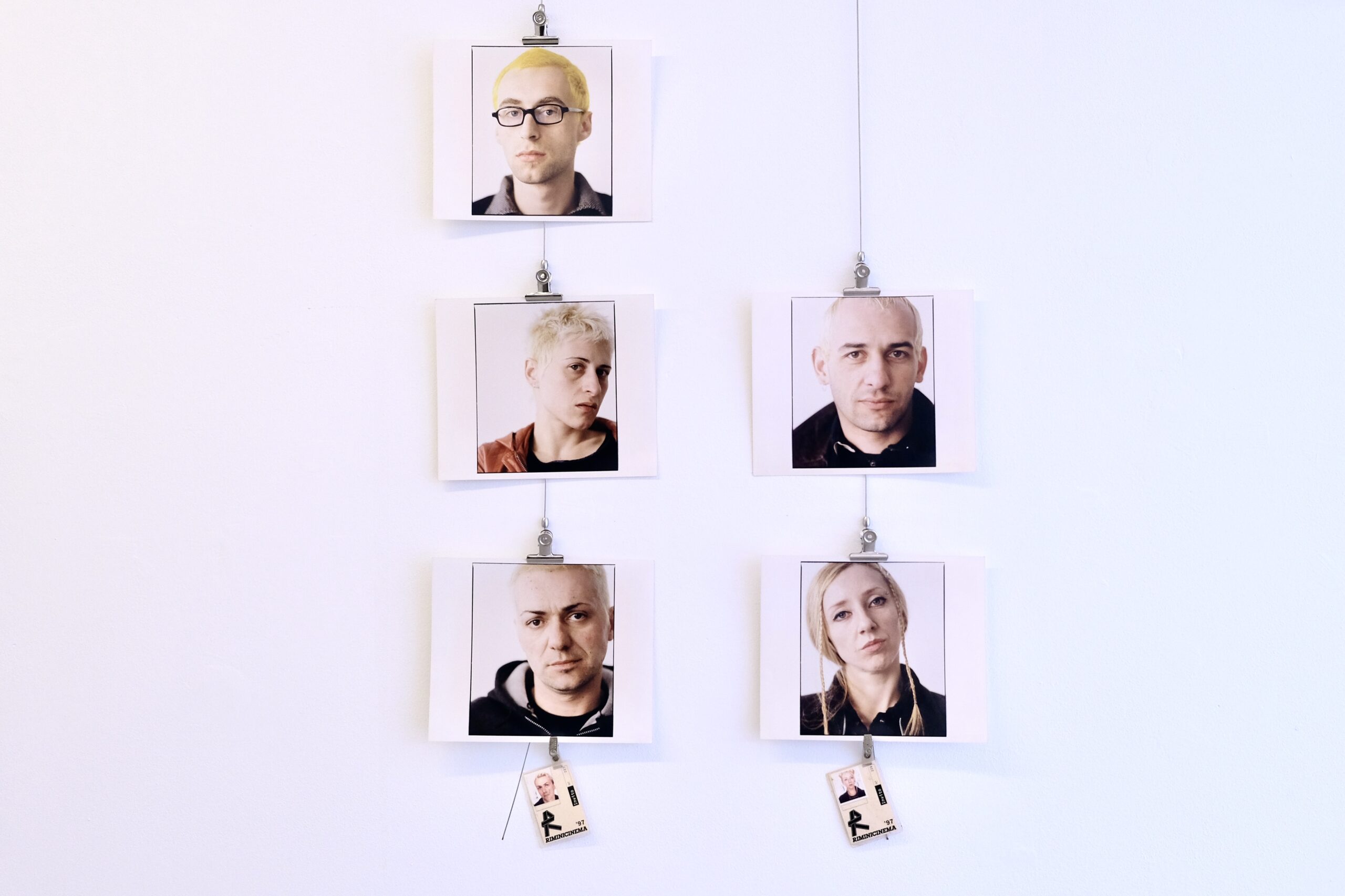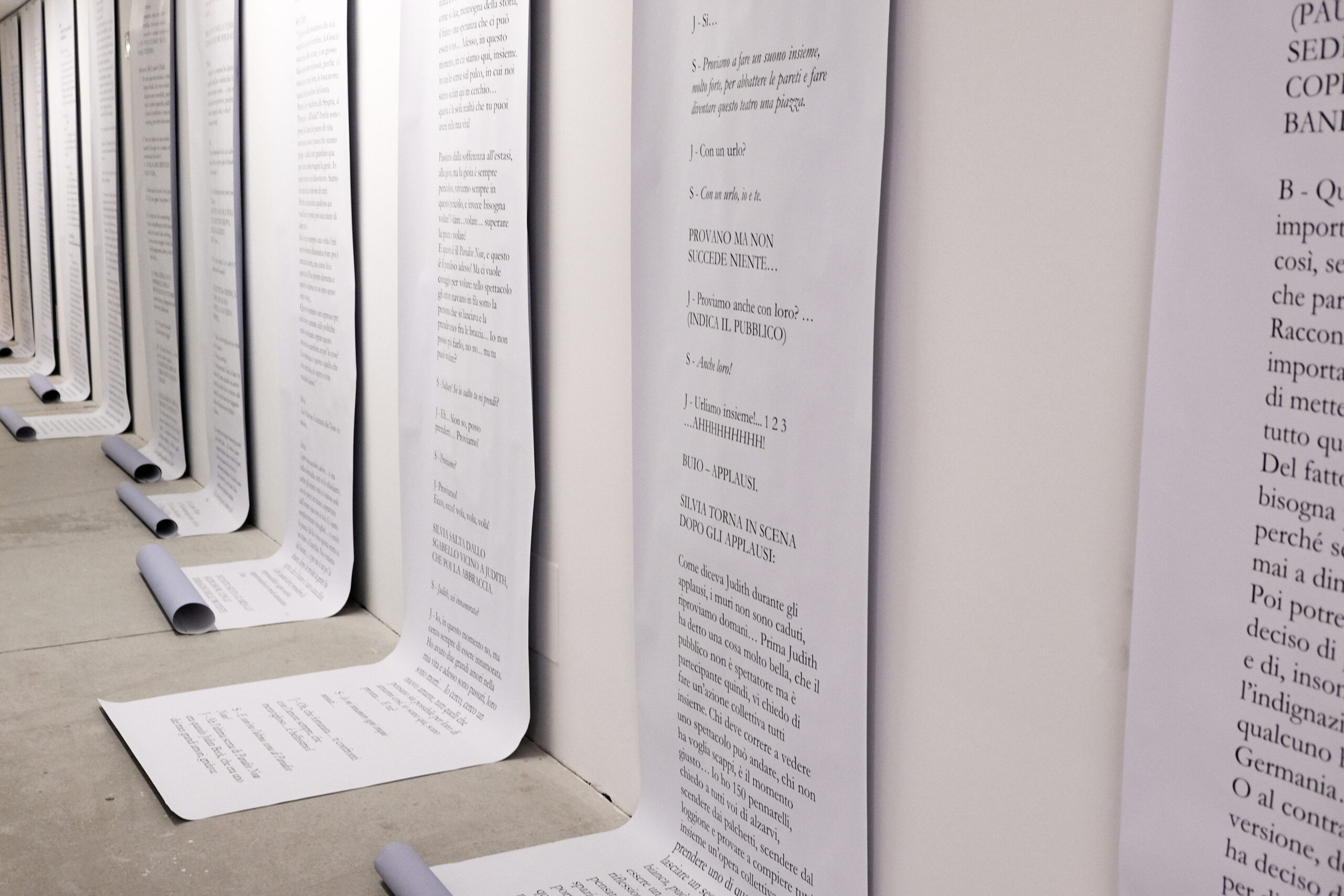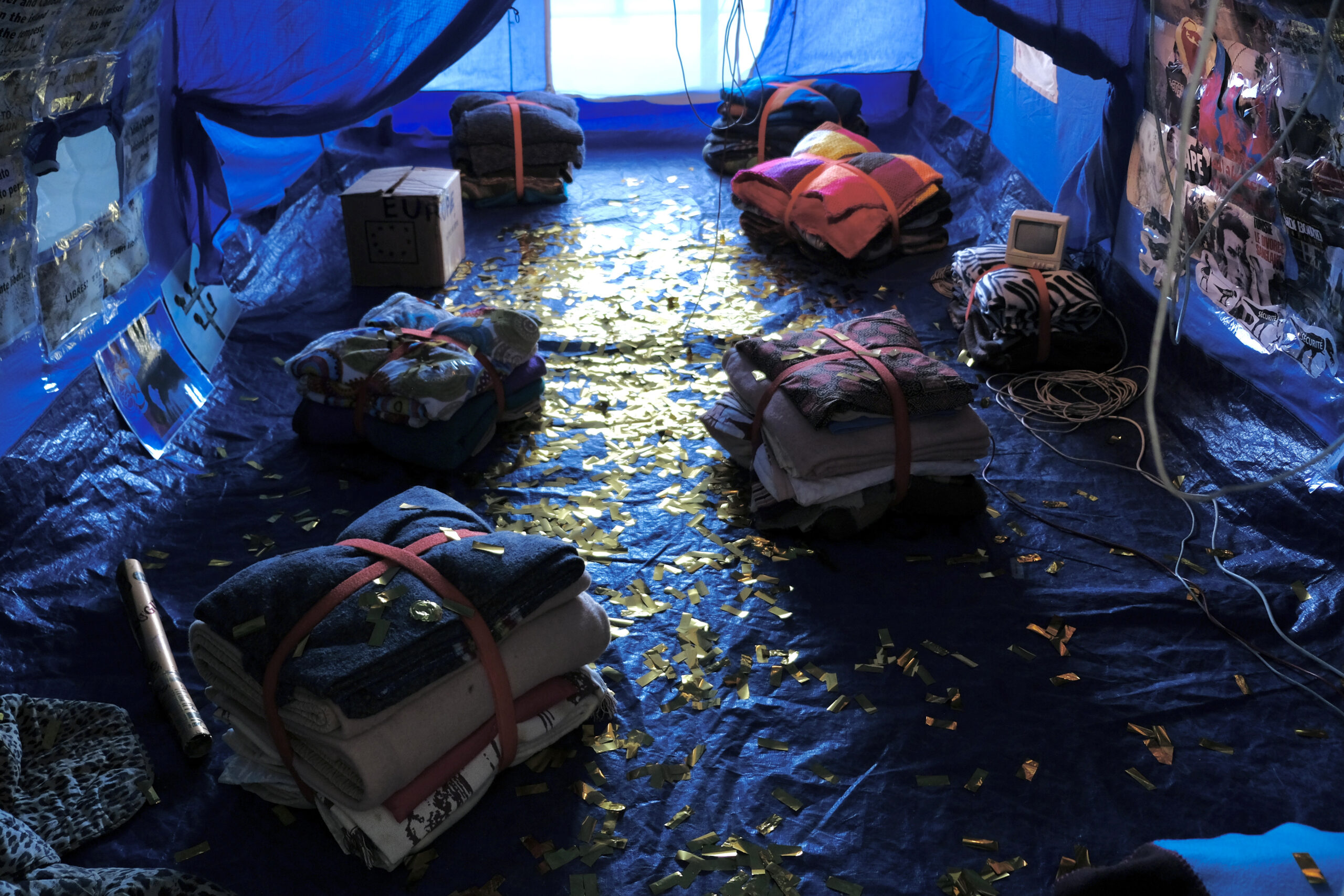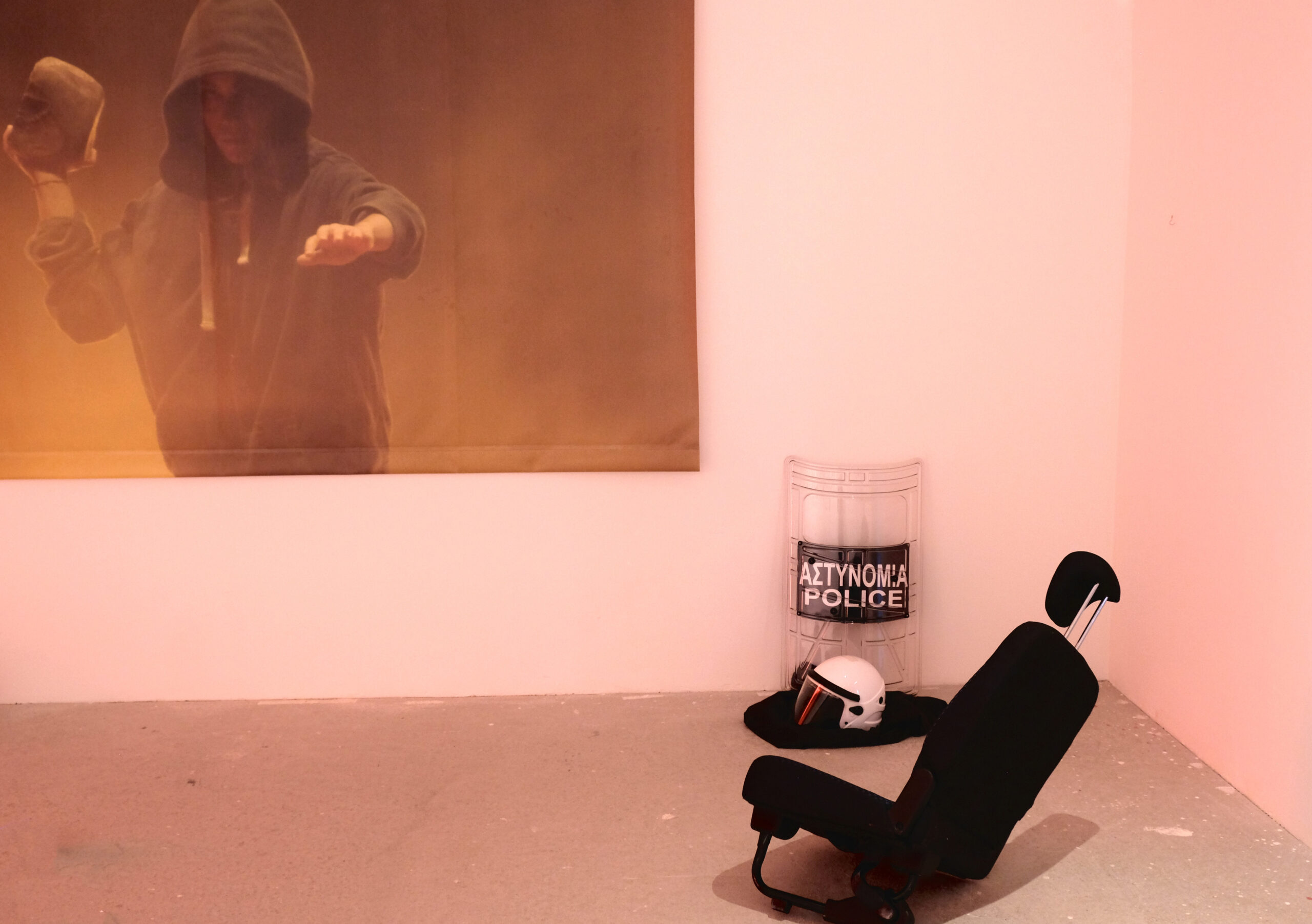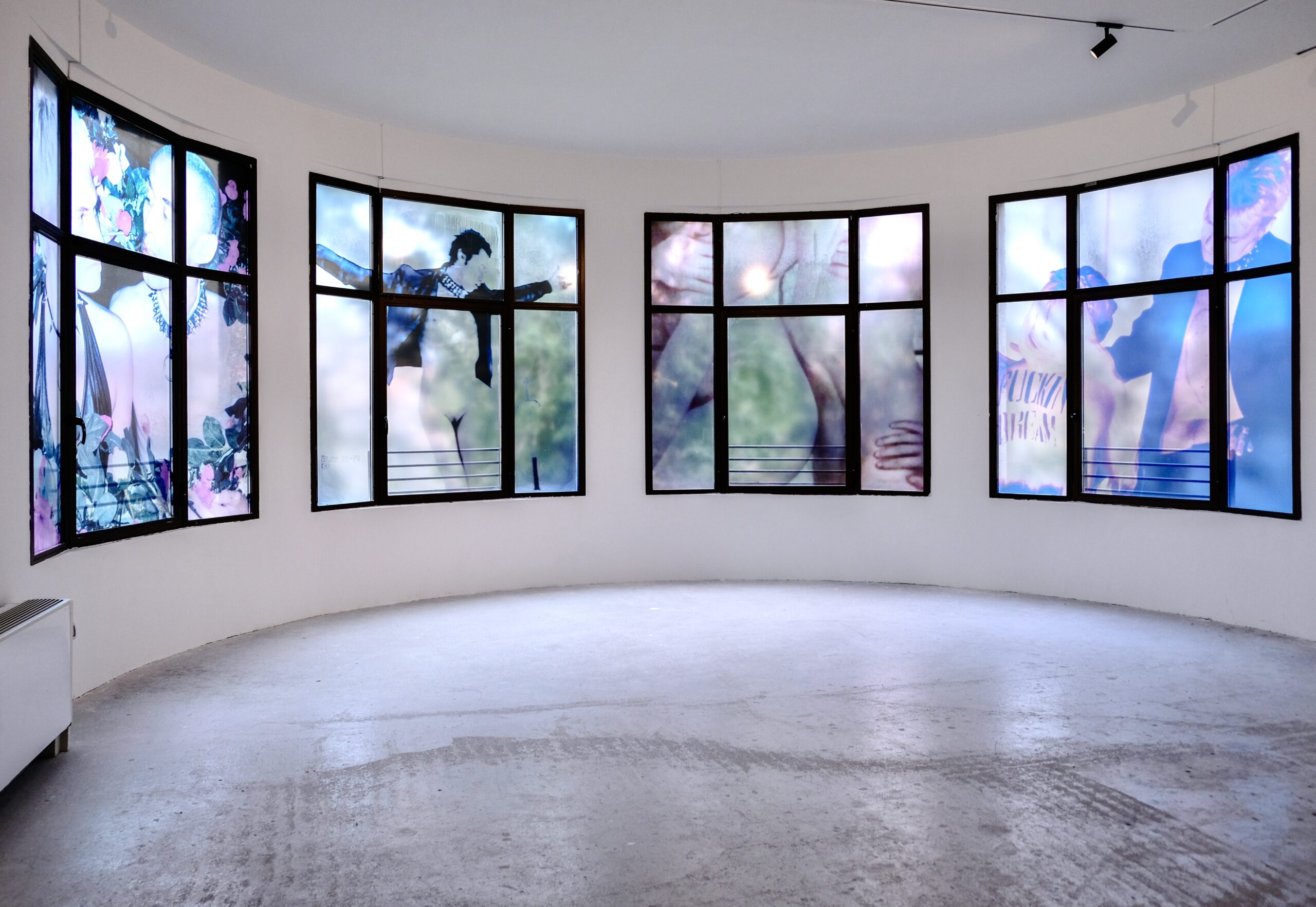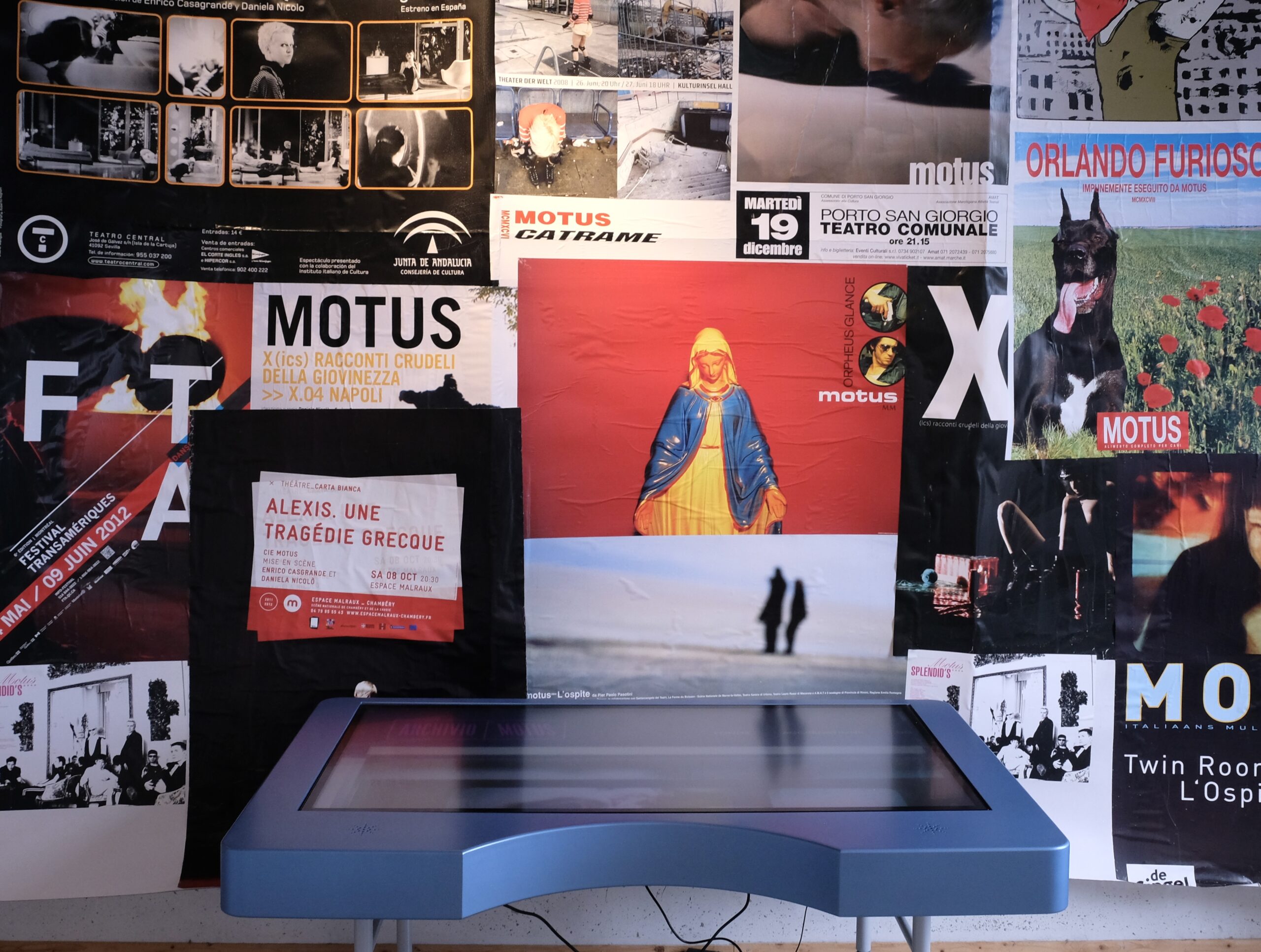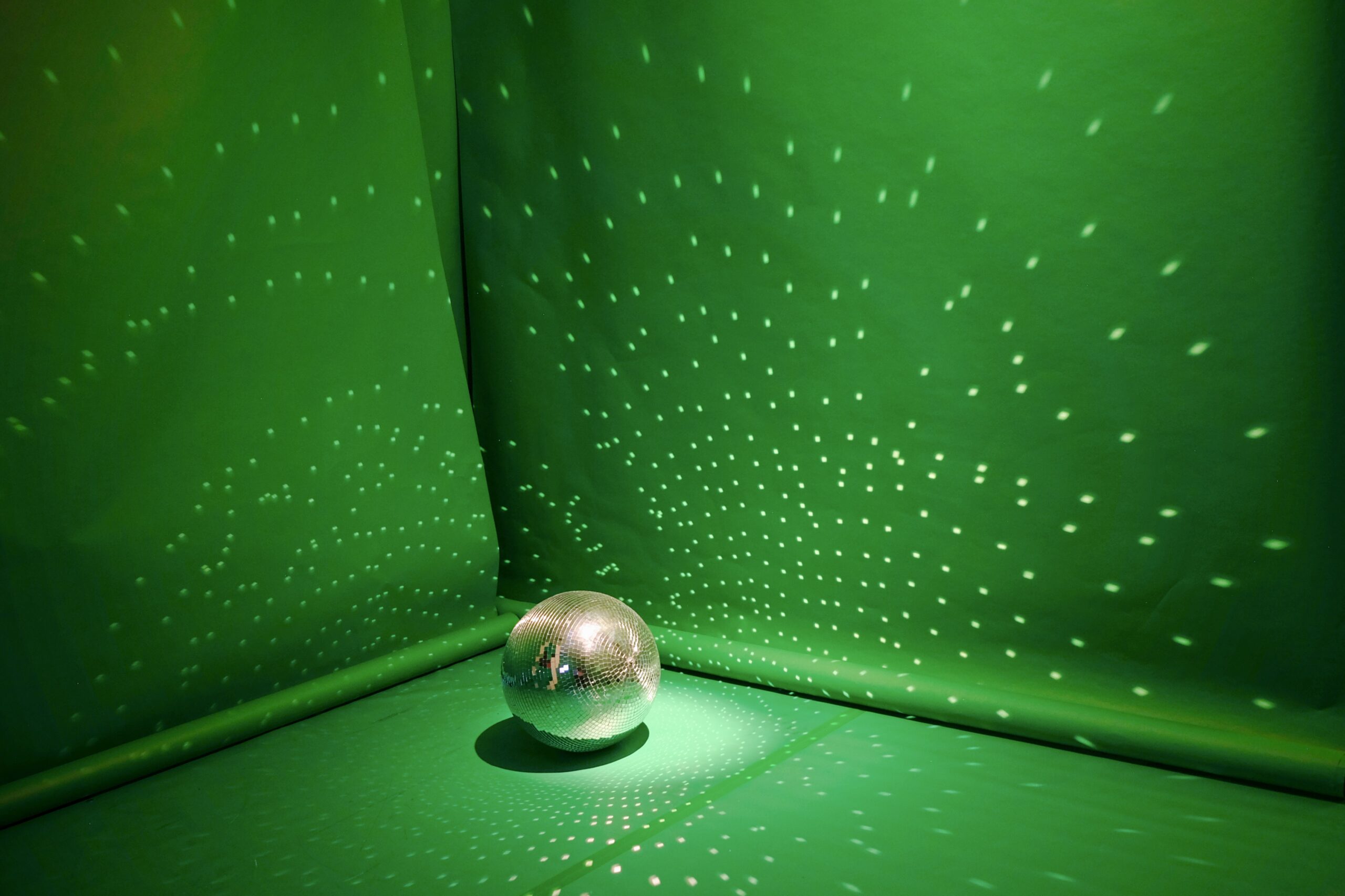
Eduard Popescu
Motus presents over 30 years of work with FUTURE IN THE PAST, an exhibition-atlas in which the company showcases, through videos, sound documents, texts, photographs, and graphic materials, the layered traces of its journey—displayed in an intentionally non-linear form.
As the title suggests, Motus does not see future and past as distant opposites that exclude each other. Instead, they coexist—simultaneously present. Slipping into the past is not a nostalgic retreat into memory, but rather an opening, a fold, a crack, an interference, a glitch—something that helps redefine contemporary issues and becomes a tool for imagining new futures.
FUTURE IN THE PAST is an attempt to traverse, haunt, and deconstruct a theatrical archive spanning 35 years. Motus explains:
“We didn’t design the exhibition as something static, but rather according to a new temporality where past, present, and future bleed into each other, rip through each other—each becoming a tool to interrogate the other. In the exhibition path, we want to preserve the liveness of theatre itself, following traces, evocations, associations. The extracted elements point back to our research, but at the same time create an environment—they are staged, they reshape the room’s perimeter, outlining an ‘other’ possible performance space.”
Objects, sounds, images, words, and noises are arranged in the rooms through associations—tactile, visual, sonic, etc.—recreating a “cumulonimbic” space for new reflections. The museum’s rooms are thematically divided, clustering together different projects linked by shared horizons and recurring motifs. Each room is introduced by a phrase or quote, a kind of map or connective thread, guiding visitors through the network of relationships that links the heterogeneous elements on display—while also acting as a bridge to the contemporary. These “breach-words” speak to the needs and references that have shaped Motus’ research and remain urgent and necessary for present and future issues.
“We want this exhibition to be more of an Atlas than an Archive—amplifying the performative dimension of this exploded accumulation of materials, which become glue, hinge, and threshold. While we dismantle linearity, we also embrace the chaos of the massive quantity of materials collected in this archival tree (with rhizomatic roots). What interests us is staging that in-between moment—before classification. Boxes are opened, notebooks are flipped through: words, photos re-emerge, illuminating other trajectories and new interpretive nuances. Time may dull—but also nourishes and fertilizes—sparking future visions. We’ve tried to recreate that moment of beautiful, terrifying, unorderable chaos—an amorphous mass that may seem like nothing, but actually reveals tension, an inexhaustible energy. Because it isn’t channeled anywhere—yet it could still become anything.”
The exhibition becomes a standalone artwork—an autonomous artistic object composed of fragments, scraps, leftovers from numerous catalogued and numbered works. Their collision and coexistence in each room give rise to a new performative event. As often in Motus’ work, the experience drifts between languages, leaving visitors free to create their own “collection.”
Co-curator Ilaria Mancia explains:
“An open work that spans 35 years and continues in the here and now (as with every performative act), an exhibition that reveals its own process of becoming—crossing porous membranes where what was once hidden in the fabric of the work is repositioned and shared; it appears delicately, then disappears again, triggering a relationship with the space that becomes time, and vice versa. In the collision between archive and exhibition of a theatre company like Motus, there emerges the possibility of a new kind of floating dramaturgy—one that expands and knots itself back together across blended, simultaneous temporalities. Walking through the exhibition will generate new living threads—woven anew with each passage.”
The digital archive portal (archivio.motusonline.com), developed in partnership with 4Science and the Gambalunga Civic Library – City of Rimini, with the invaluable care of archivist Mara Sorrentino, offers—despite the chronological linearity of its cataloguing—opportunities for thematic jumps and personalized, deconstructed pathways of exploration.
FUTURE IN THE PAST is also imagined as a place to linger—to lie down, to “waste time” listening or flipping through director’s notebooks, to enter performances from a different angle—not that of a voyeuristic spectator, but as a collector, a curator, someone who dissects and re-names components using their own lexicon. It is an exhibition to inhabit and interact with—leaving behind written or audio traces, becoming performers of the space itself, which transforms into a new stage for small scenic actions and postures.
A project by Daniela Nicolò and Enrico Casagrande
With contributions by Beatrice Ottaviani
And co-curated by Ilaria Mancia
Installation by Lucia Mussoni and Damiano Bagli
Production: Dea Vodopi
Graphic design: Federico Magli

